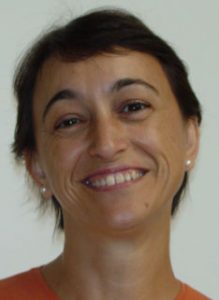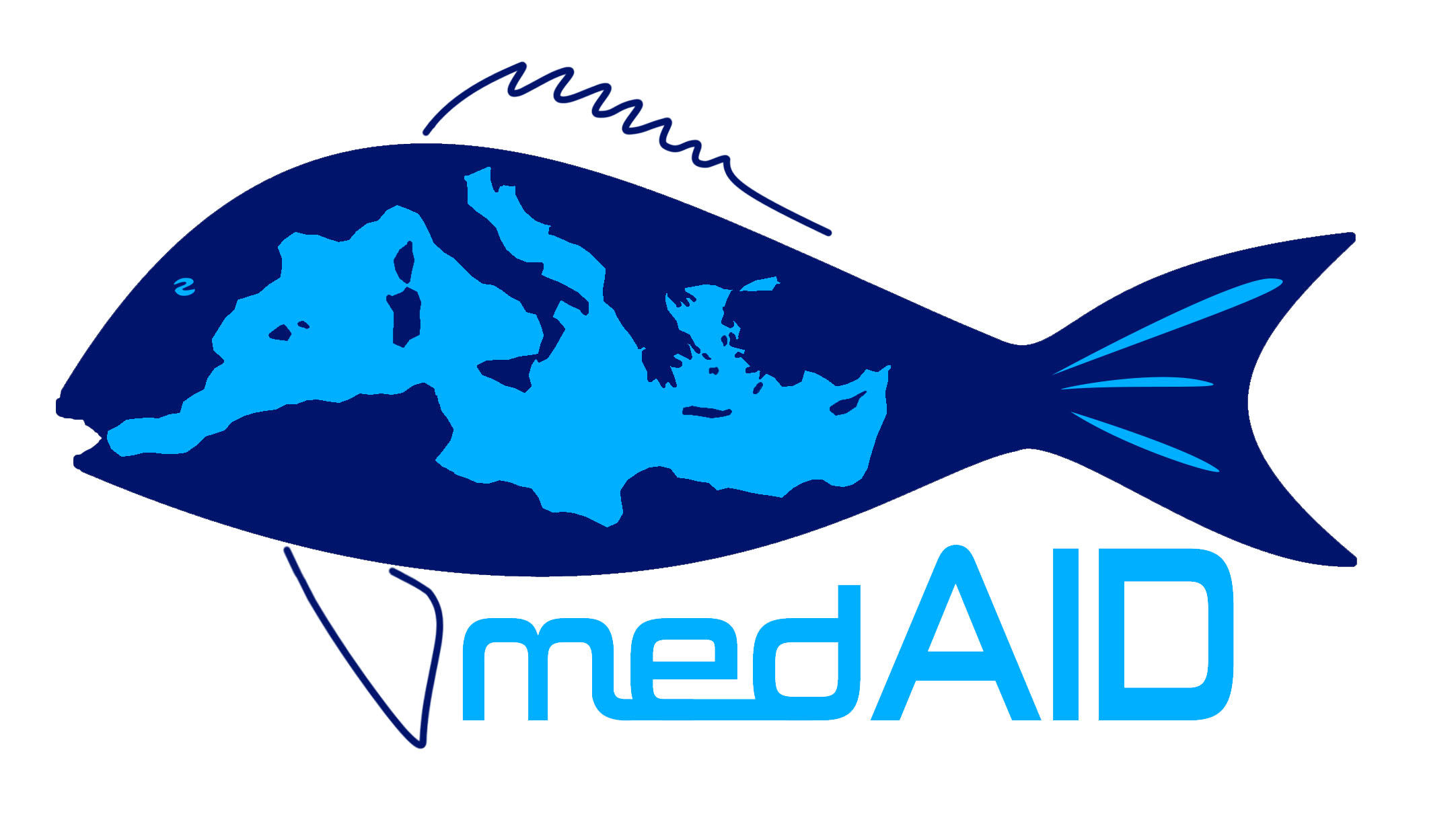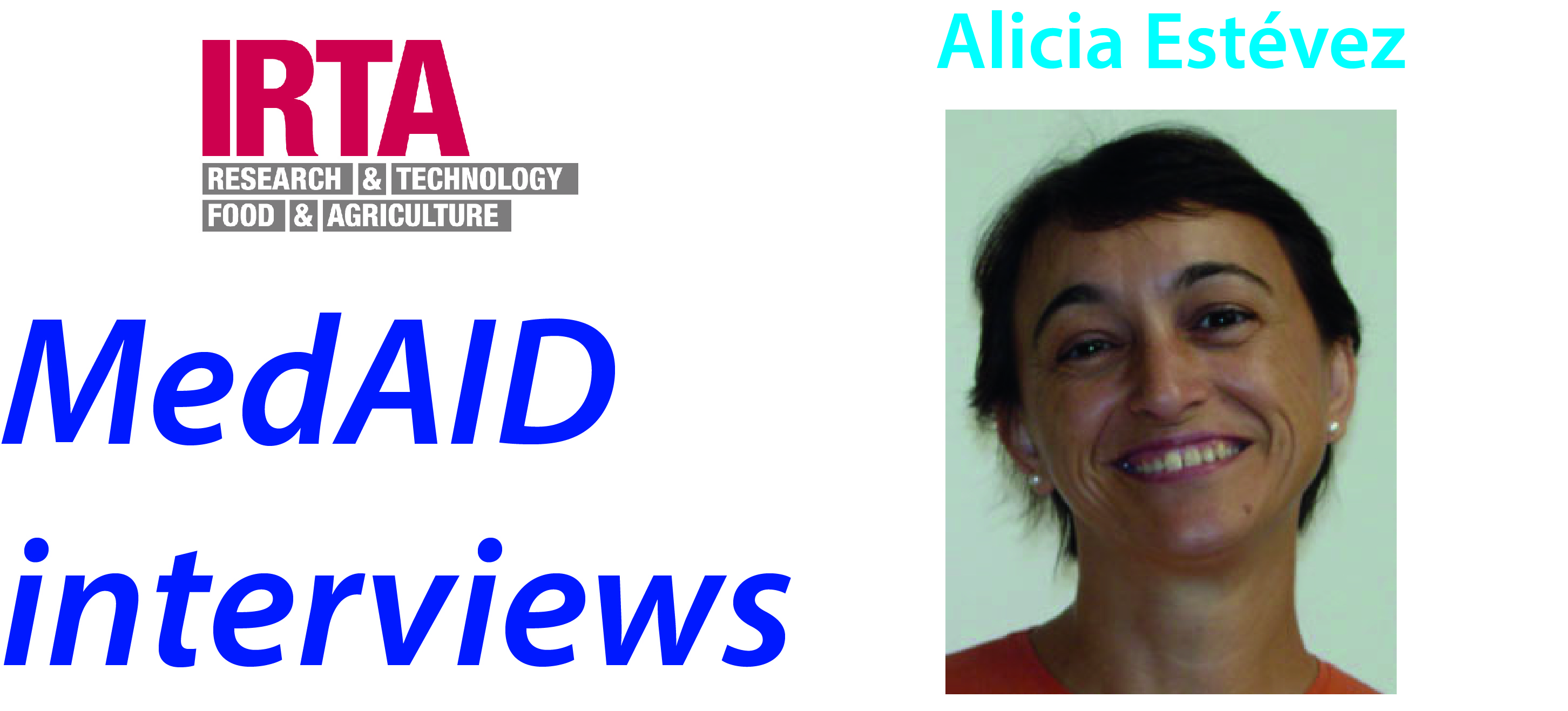Alicia Estévez has a bachelor’s degree in biology from the Complutense University of Madrid (1982) and a PhD in Fisheries from Kagoshima University (Japan, 1996) and several post-doc fellowships (Stirling University, UK, 1997 with a EU Grant in Aid and Kyoto University, Japan, 1998-2000 with a scholarship from the Japan Society for the Promotion of Science, JSPS). She works as a researcher at the Institute of Agrifood Research and Technology (IRTA), at the Centre of San Carlos de la Rápita that belongs to the Generalitat de Cataluña, where she has been working since 2000 in marine aquaculture, mainly in the larviculture of marine organisms (including fish, crustaceans and mollucs) and in fish nutrition and feeding.
Alicia has written over 130 scientific papers and has been involved in more than 40 national (JACUMAR, MICINN, CDTI) and international projects. Alicia is involved in MedAID project (Mediterranean Aquaculture Integrated Development), as the leader of WP2 -Improving Zootechnical Performance.
Today we are not interviewing her about the research she is conducting in MedAID Project, but for her involvement in Organic Aquaculture as she is a member of the “Expert Group for Technical Advice on Organic Production (EGTOP). EGTOP is a permanent group and advises on many areas of organic production, including aquaculture. EGTOP produces regular reports on organic production and also assesses requests from EU countries to amend the technical annexes of the regulations.
Could you explain us the work that EGTOP is implementing on aquaculture?
First of all, it is important to know what Europe considers organic production: “Organic production is an overall system of farm management and food production that combines best environmental and climate action practices, a high level of biodiversity, the preservation of natural resources and the application of high animal welfare and high production standards in line with the demand of a growing number of consumers for products produced using natural substances and processes.” (Regulation (EU) 2018/848 of the European Parliament and of the Council of 30 May 2018).
The main task of the group has been to review the regulations in aspects related to the production of aquaculture animals (including fish, crustaceans and molluscs) such as reproduction, production of juveniles, nutrition, health and welfare, and culture practices with the aim to help the authorities of the different EU countries to regulate and supervise the production of these animals under what can be considered “organic” and sustainable.
I started working in organic aquaculture production in 2013 revising the content of the Commission Regulation (EC) No 889/2008 of 5 September 2008 in several aspects related to the (1) the lack of juveniles, especially of marine fish; (2) feed sources and additives for carnivorous fish and shrimps;(3) use of fish meal and fish oil from trimmings; (4) alternative protein sources; and (5) use of histidine, lecithin and cholesterol addition in aquaculture feeds. All these subjects were included in a report (Part A) published by DG-AGRI in December 2013.
In 2014, a new meeting took place to review aspects related to stocking density in organic production, to look into the possibility of using recirculation technology and mainly revise use of eyestalk ablation in shrimps (that is prohibited) and the elaboration of specific rules for juvenile production, especially in marine fish. Also the use of substances for cleaning and disinfection was reviewed and several suggestions were offered to the authorities, and published by DG-AGRI in July 2014.
All the suggestions given by the group were adopted by the European Commission in a new regulation (Regulation (EU) 2018/848, that was revised in 2019.
There are still some subjects not totally clarified in the regulation, especially in the production of marine juveniles. One of the main aspects is the prohibition to use any kind of water-soluble fertilizers that make the production of microalgae, and consequently zooplankton (rotifers and Artemia) impossible. Also, the use of zooplankton enrichment products is not allowed either, and altogether this makes the production of marine juveniles completely impossible. In order to provide juveniles for organic aquaculture, the use of conventionally produced juveniles is allowed for marine fish. In the case of freshwater fish there are no problems because they can be fed with organic feeds from hatching.
If you want to have a look at the different documents produced by the EGTOP group please consult this link: https://ec.europa.eu/info/food-farming-fisheries/farming/organic-farming/co-operation-and-expert-advice/egtop-reports_en
You are also a partner in H2020 Project NewTechAqua that has just started, where you are responsible for a task related with the production of sustainable and organic aquaculture feeds. Could you explain us the objectives and the planned research?
In the NewTechAqua project I am involved in WP1 (Feed and Feeding Strategies), where one of the objectives is to develop organic low fishmeal aquafeed in conventional and emerging species. In Task 1.3: Refining organic feeds for trout, seabream and meagre: merging sustainability with an affordable cost, the objective is to evaluate new sources of organic plant-derived proteins (gluten, sunflower and rapeseed meals) as new ingredients for organic feeds. Organic feed is formulated using ingredients considered sustainable and/or produced under the organic regulation. Among these ingredients we can find (1) trimmings from fish (viscera, bones and other fish remains that are processed for human consumption), (2) fish from sustainable fisheries (selected because trimmings have very little protein content and too much phosphorus), (3) meals and oils from organically produced plants, and recently (4) single cell proteins and other alternative ingredients (i.e. insect meal) that will be allowed if they are produced using organic materials as feed sources.
These new organic plant ingredients will be incorporated in the formulation of the feed and tried at different inclusion levels for rainbow trout –as a freshwater fish model- and gilthead seabream –as a marine fish model- to examine their effects on growth and feed conversion. These new organic plant ingredients will be selected taking into account their price and availability to improve not only the efficiency of organic feed but also the price.
 Alicia ESTEVEZ GARCIA
Alicia ESTEVEZ GARCIA
IRTA Sant Carles de la Ràpita
Crta: Poble Nou, Km 5,5
43540 Sant Carles de la Ràpita

